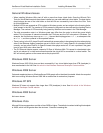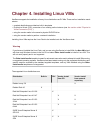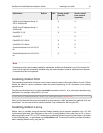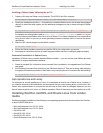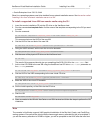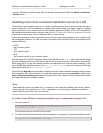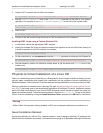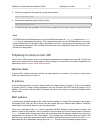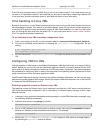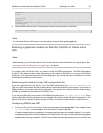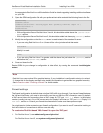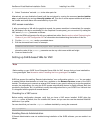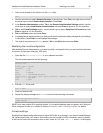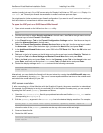
XenServer Virtual Machine Installation Guide Installing Linux VMs 21
2. Mount the image onto the guest by running the command:
mount /dev/xvdd /mnt
3. Execute the installation script as the root user:
/mnt/Linux/install.sh
4. If the kernel has been upgraded, or the VM was upgraded from a previous version, reboot the VM now.
Note
CD-ROM drives and ISOs attached to Linux Virtual Machines appear as /dev/xvdd instead of as /dev/
cdrom as you might reasonably expect. This is because they are not true CD-ROM devices, but normal
devices. When the CD is ejected by either XenCenter or the CLI, it hot-unplugs the device from the VM
and the device disappears. This is different from Windows Virtual Machines, where the CD remains in
the VM in an empty state.
Preparing to clone a Linux VM
When a Linux VM is cloned, some virtual hardware parameters are changed in the new VM. The VM may
need to be customized to be made aware of these changes. For instructions for specific supported Linux
distributions, see the section called “Release Notes”.
Machine Name
A cloned VM is another computer, and like any new computer in a network, it must have a unique name
within the network domain it is part of.
IP address
A cloned VM must have a unique IP address within the network domain it is part of. This is not a problem
in general if DHCP is used to assign addresses; when the VM boots the DHCP server will assign it an IP
address. If the cloned VM had a static IP address, the clone must be given an unused IP address before
being booted.
MAC address
In some cases, the MAC address of the virtual network interface of a cloned VM is recorded in the network
configuration files. After the VM is cloned, the new cloned VM has a different MAC address. Therefore,
when started, the network does not come up automatically.
Some Linux distributions use udev rules to remember the MAC address of each network interface, and
persist a name for that interface. This is intended so that the same physical NIC always maps to the same
eth<n> interface, which is particularly useful with removable NICs (like laptops). However, this behavior is
problematic in the context of VMs. For example, if you configure two virtual NICs when you install a VM,
and then shut it down and remove the first NIC, on reboot XenCenter shows just one NIC, but calls it eth0.
Meanwhile the VM is deliberately forcing this to be eth1. The result is that networking does not work.



